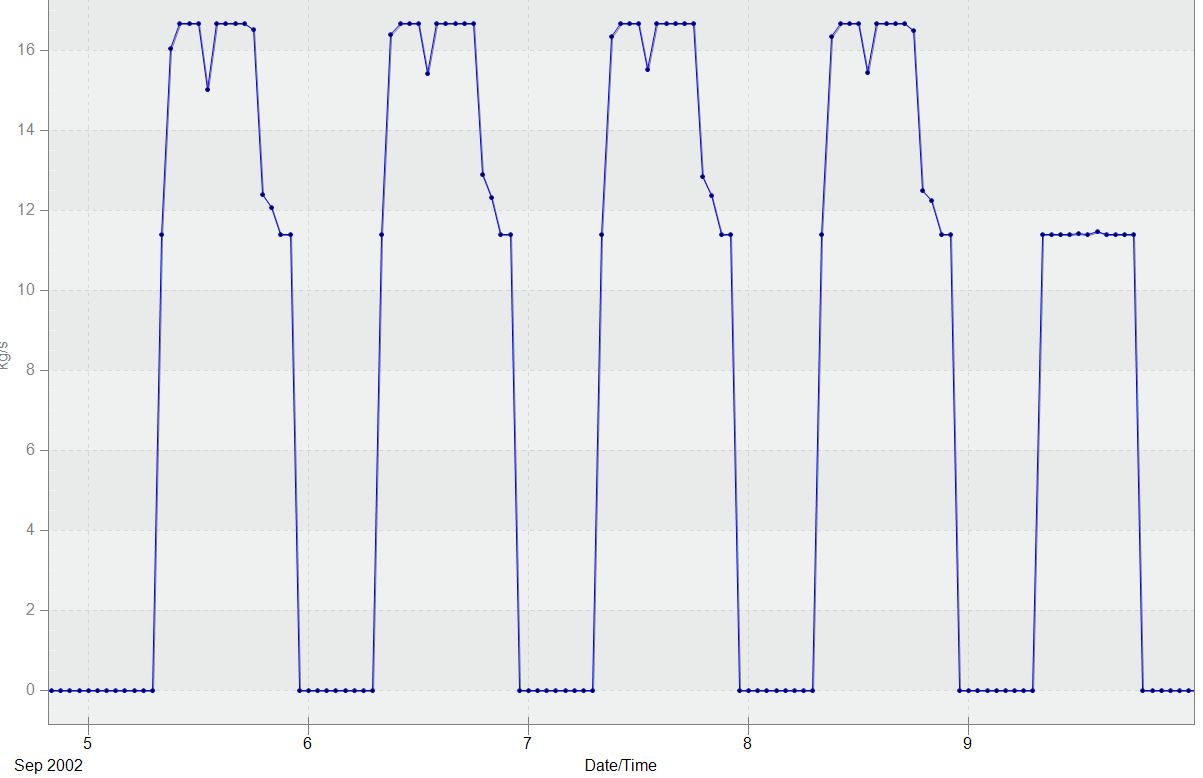I am looking at the Large office, post-1980 construction DOE Commercial Reference Building and was going to assess the impact of implementing demand controlled ventilation. To my surprise, though, when I looked at the annual outdoor air profile, it seemed that DCV was already being applied. If you look at the attached picture, outdoor air volume is clearly tracking occupancy to some extent (emphasized by the dip during lunchtime and tapering into the evening); however, it is doing so imperfectly (you can see slight variation in profile from day to day). There is no Controller:MechanicalVentilation object in the model (which is the only place I thought that DCV could be applied - my methodology was going to be to introduce this object to implement DCV). These observations have led me to the following questions:
- How is DCV applied in the absence of a Controller:MechanicalVentilation object
- What, other than occupancy, is governing the outdoor air volume delivered by the system (note: NoEconomizer is selected)
Is it reasonable to assume that these older buildings are really employing DCV to begin with? I've noticed that the New Construction versions of these models do not employ DCV (despite the DCV being selected, ventilation rates are entered on a per-unit-area basis and as a result outdoor air volume does not vary with occupancy as it has no defined ralationship to it).





